
Distributed by
Any reference to Raytheon or RTN in this manual should be interpreted as Raymarine. The names Raytheon and RTN are owned by the
Raytheon Company.

Distributed by
Any reference to Raytheon or RTN in this manual should be interpreted as Raymarine. The names Raytheon and RTN are owned by the
Raytheon Company.

TOP EDGE BLEED
MASK FOR
2 COLOUR
SEATALK
LOGO
ST 30
BIDATA
Operation and
Installation

Nautech Limited, Anchorage Park, Portsmouth
P03 5TD, England
Telephone (0705) 693611. Fax (0705) 694642

ST30 Bidata Operation and Installation Handbook
DEPTH SPEED
DISPLAY
Feet
Knots
RESET SPEED BIDATA
D681
Autohelm and SeaTalk are registered Trade Marks of Nautech Limited
Autohelms policy of continuous improvement and updating may change product specifications without prior notice
Copyright Nautech 1992
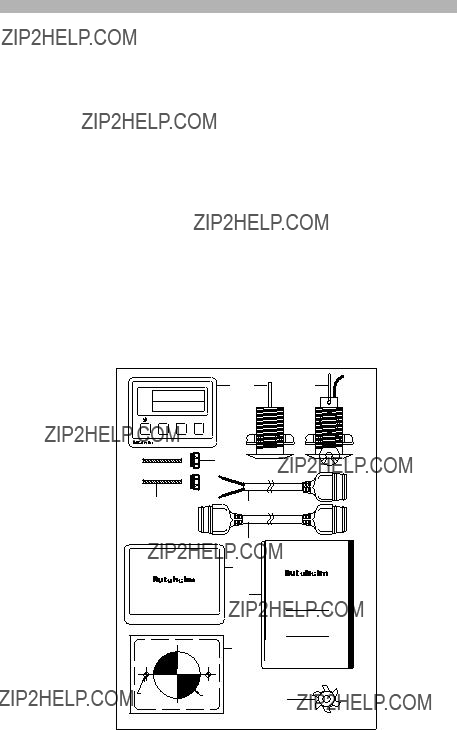
ST30 Bidata Operation and Installation Handbook
Package Contents
The following items are included in the ST30 Bidata package:
1.ST30 Bidata instrument
2.Fixing studs (2 off)
3.Thumb nuts (2 off)
4.Mounting template
5.1m power cable
6.Depth transducer (through hull) with 10m cable and 1/8in spade connectors
7.Speed transducer (through hull) with 10m cable and 1/8in spade connectors (0 to 32 knots)
8.Instrument cover
9.Operation and installation handbook
10.High speed paddle wheel (2 to 45 knots)
11.
7
SeaTalk SeaTalk
11
8
TM
D680

Contents


Introduction
Designed for above or below deck installation, the ST30 Bidata can be used as a
The ST30 Bidata will display the following information:
???Water depth
???Shallow water alarm
???Deep water alarm
???Keel/Waterline offset
???Minimum depth
???Boat speed
???Log
???Trip
???Maximum speed
???Average boat speed
???Illumination level
DEPTH SPEED
DISPLAY
Feet
Knots
RESET SPEED BIDATA
TM
D681
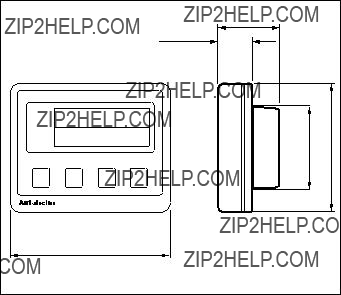
Chapter 1: Control Head Installation
1.1 Siting
The ST30 Bidata instrument may be installed above or below deck where it is:
???easily read by the helmsman (normally viewed at eye level)
???protected from physical damage
???at least 230mm (9in) from a compass
???at least 500mm (20in) from radio receiving equipment
???accessible from behind for ease of installation and cable running
Notes: To prevent the
The rear case is fitted with a foam gasket to form a
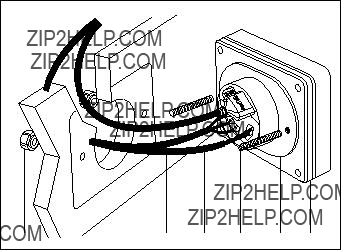
1.2 Mounting procedure
5 Depth transducer cable 6 Speed transducer cable
1.Make sure the surface to which the instrument (1) is to be mounted is smooth and flat.
2.Use the fitting template (supplied) to mark the centres for the two fixing holes and the instrument connector boss.
Note: To allow for the fitting of protective covers, adjacent instruments must have a 6mm (1/4in) gap between them (116mm centre to centre min.).
3.Drill two 5mm (0.2in) diameter holes for the fixing studs (2).
4.Using a 60mm (2 3/8in) diameter cutter, drill a location hole for the instrument connector boss.
5.Connect the power supply and transducer cables to the back of the instrument (1) (see relevant installation sections).
6.Screw the two fixing studs (2) into the back cover.
7.Install the instrument (1) and secure with the thumb nuts (3) provided.

1.3 Power supply
Caution: The ST30 Bidata must be connected to a 12V supply only.
SEATALK
D
E
E
P
S
HT
P
E
D
D683
For
1.Connect the moulded power plug to either 'SeaTalk' connection on the rear of the instrument. Run the free end back to the vessel's distribution panel.
2.Cut the cable to length and connect the red wire to 12V and the screen to 0V. Protect the circuit with a 5A fuse/circuit breaker.
1.4Power supply (SeaTalk system)
The ST30 Bidata can be connected to an existing SeaTalk system using a
Standard SeaTalk Extension or Interface Cable.
1.5 Connection to adjacent ST30 Instruments
The ST30 Bidata is supplied with a
The
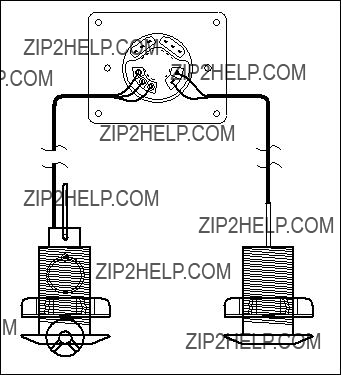
Chapter 2: Transducer Installation
2.1 Connection to instrument
The depth and speed transducers are supplied with 10m (32.5ft) of cable. These cables are fitted with female spade connectors that plug directly into the back of the ST30 Bidata instrument.
2.2 Transducer type
The ST30 Bidata system is supplied (as standard) with plastic through hull transducers. These are suitable for use with Glass Reinforced Plastic (GRP), Steel and Aluminium hulls.
Alternative transducers are available for wooden hull and transom mount installations.

Depth
GRP, Steel, Aluminium Standard through hull
GRP, Steel, Aluminium Retractable depth (Z120)
In hullIn hull puck (Z117)
Speed
Speed and depth
Caution: Plastic through hull transducers must not be used on vessels with wooden hulls.
Note: The ST30 Speed transducers are fitted with standard paddlewheels designed for speeds up to 32 knots. For vessels that will exceed this speed, please refer to section 2.3 which contains instructions on how to fit the high speed paddlewheel (supplied).

2.3 Paddlewheel replacement
If the high speed paddlewheel (supplied) is to be fitted, or the existing paddlewheel to be replaced, proceed as follows:
1.Remove the retaining rings (1) and pin (6) from the speed transducer (3).
2.Withdraw the speed transducer (3) from the through hull fitting (4).
3.If replacing a worn paddlewheel and if the vessel is still in the water, replace the speed transducer (3) with the plug (5).
4.Remove the pin (6) that retains the paddlewheel (7) in the speed transducer (3). This is a simple press fit into the transducer housing.
5.Fit the high speed/replacement paddlewheel (7) to the speed transducer (3) and retain with the pin (6).
Note: The paddlewheel is correctly orientated when the working (flat) surfaces of each paddle are facing forwards.
6.Assemble the speed transducer (3) to the through hull fitting (4) and secure with the retaining rings (1) and pin (2).
3
6
7
5
8
2
1
4
D587a
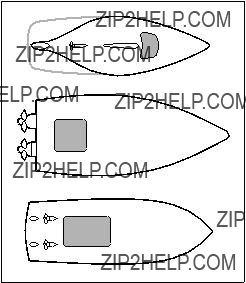
2.4 Installation
The depth and speed transducers are supplied with detailed installation and maintenance instructions. These instructions, together with following notes, should be read thoroughly before attempting to install the transducers.
Speed transducer (through hull)
For accurate speed readings, locate the speed transducer in the shaded ''clear flow' areas as shown.
D587
The transducer should also be:
???ahead of propellers (10% W.L. length minimum)
???at least 150mm (6in) from the keel (with sailing yachts siting should be forward of the keel)
???near the centreline of the vessel
???clear of other through hull fittings or projections
???have sufficient clearance inside the hull to allow the nut to be fitted
???have 100mm (4in) clearance above the through hull fitting for withdrawal
Note: The speed transducer can, if required, be shortened. However, new 1/8in spade connectors must be crimped to the shortened cable.
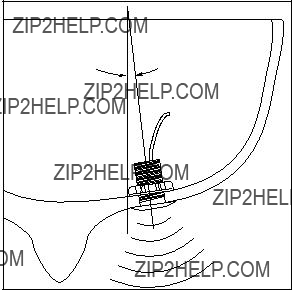
Siting of depth transducer (Standard through hull)
The depth transducer must be vertical to within 10??, forward, aft and athwart ships.
10?? Max
D630
2.5 Cabling
Run the transducer cable back to the instrument. Avoid fluorescent lights, engines, radio transmitting equipment and, in the case of the depth transducer, avoid the speed transducer cable. The cables should also be kept clear of the bilge??s and be secured at regular intervals.
Note: The depth transducer cable must not be shortened. Shortening of the cable will affect the performance of the transducer. For further information, please contact Autohelm or an authorised Autohelm agent.
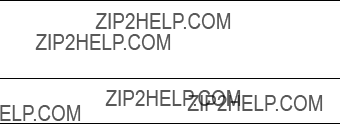
If any of the following transducers are to be used;
???Bronze through hull depth (Z118)
???In hull puck (Z117)
???Retractable depth (Z120)
???Bronze through hull speed (Z116)
???Transom mount speed (Z119)
???Bronze through hull triducer (Z093)
???Transom mount Biducer (Z183)
the following modification must be carried out to the transducer leads.
1.Using a pair of wire cutters, remove the moulded plug from the end of cable.
2.Strip the outer cable back 38mm (1.5in)
3.Using a pair of cable strippers, remove 10mm (3/8in) of insulation from each wire.
4.Using a suitable crimping tool, attach a 1/8in spade connector (supplied) to each of the wires.
5.Connect the wires to the instrument in accordance with the following table.
Blue ?? red terminal Black & screen ?? white terminal


Chapter 3: Fault Finding
All Autohelm products are, prior to packing and shipping, subject to comprehensive test and quality assurance programmes. However, in the unlikely event that a fault does occur with the ST30 Bidata, the following table will help to identify the probable cause and provide the most likely cure.
Note: After installation, poor performance may be experienced if the surface of the depth transducer has not been 'wetted'. Wetting can take up to 24 hours under normal conditions. The transducer can be wetted prior to launch by applying a mild detergent to the external face.
Chapter 4: Maintenance
4.1 Instrument
Atmospheric conditions may cause condensation to appear on the instrument window. This will not harm the instrument and can be cleared by increasing the illumination setting to level 3.
Chemical and abrasive materials must not be used to clean the ST30
Bidata instrument; if the instrument is dirty, clean with a soft, damp cloth.
4.2 Transducers
Refer to the Installation and Maintenance instructions supplied with the transducers.
4.3 Cabling
Examine cables for chafing or damage to the outer shield and, where necessary, replace and
4.4 Advice
For advice, or further information regarding installation of this product, please contact the Autohelm Product Support Department or your own National Distributor.
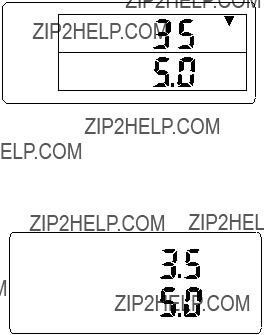
Chapter 5: Operation
The ST30 Bidata is set in the factory to:
???display depth in feet
???display speed in knots
???operate with the depth alarms switched off
???operate in Master mode
These settings can be changed in calibration (section 6.1).
When the ST30 Bidata is switched on, depth information (upper display) and speed information (lower display) is shown in the units set up in calibration.
D710
Note: The trend arrows (???) decreasing (???) increasing, shown in the above display, indicate whether the trend is towards deep or shallow water.
5.1 Depth Key
Each press of Depth cycles the following menu:
??? Shallow alarm
D710
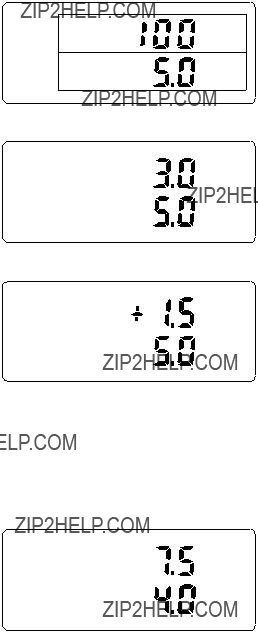
??? Deep alarm
Deep
DEPTH
Metres
D710 ??? Minimum depth
A further press of Depth will return the unit to current Depth. The above menu will automatically return to current Depth after 8 seconds if there are no further key commands.
5.2 Speed Key
Each press of Speed cycles the following menu:
??? Trip Distance
D710

??? Log
??? Maximum Speed
A further press of Speed will return the unit to current boat speed.
Note: Log distances over 999nm or miles are displayed in thousands, hundreds and tens (e.g., 1th 510nm).
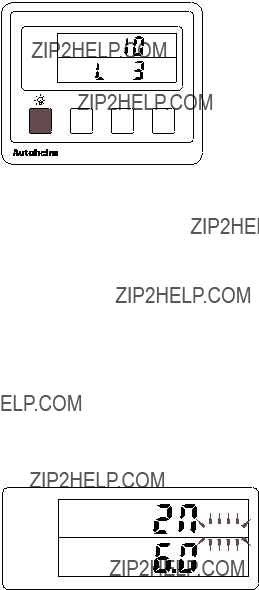
5.3 Light Key
 Cycles the level of instrument illumination. There are 3 levels with level 3 the brightest.
Cycles the level of instrument illumination. There are 3 levels with level 3 the brightest.
DEPTH
Metres
SPEED
DEPTH SPEED RESET
TM
BIDATA
D719
The display returns to current speed after 8 seconds or when speed key is pressed.
Note: When the ST30 Bidata is used in a SeaTalk system, illumination may be adjusted from any instrument.
5.4 Alarms
The ST30 Bidata is equipped with visual and audible shallow water and deep water alarms.
Both of these alarms are set in calibration (see section 6.1).
Any button press will silence the 'Shallow' alarm. However, the 'Shallow' indicator will continue to flash until the depth exceeds the alarm value.
The 'Deep' alarm sounds when the 'Deep' setting is crossed either when going from shallow to deep or deep to shallow waters. Any button press will silence the alarm.
Loss of signal
The 'feet or metres' legend flashes whenever the depth signal is lost.
DEPTH
 Metres
Metres
SPEED
Knots
D720

Chapter 6: Calibration
6.1 Depth calibration
The ST30 Bidata can be programmed to display depth information in feet or metres, set alarms for shallow and deep water and allow for keel or waterline offsets.
To select the calibration menu, press and hold and Depth. After 2 seconds the display will show CAL.
and Depth. After 2 seconds the display will show CAL.
DEPTH
SPEED
DEPTH SPEED RESET
TM
BIDATA
D685
Each press of Depth will cycle the unit through the depth calibration menu.

Units selection ??? depth
1.Cycle Depth until the display shows feet or metres.
SPEED
DEPTH SPEED RESET
D686
2.Select feet or metres, as required, using Reset.
DEPTH
Metres
SPEED
DEPTH SPEED RESET
TM
BIDATA
D687
Shallow alarm
1.Cycle Depth until the 'Shallow' alarm is displayed.
SPEED
DEPTH SPEED RESET
TM
BIDATA
D688

2.Press Reset or to set the required depth.
to set the required depth.
SPEED
DEPTH SPEED RESET
TM
BIDATA
D688a
3.The Shallow Alarm is enabled by pressing Speed. When the alarm is on the 'Alarm' legend is displayed.
SPEED
DEPTH SPEED RESET
TM
BIDATA
D689
Deep alarm
1.Cycle Depth until 'Deep' alarm is displayed.
Deep
DEPTH
Metres
SPEED
DEPTH SPEED RESET
TM
BIDATA
D690
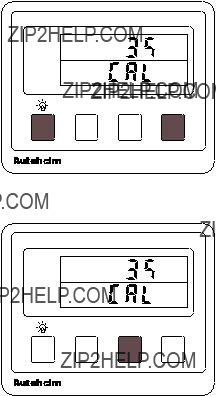
2.Press Reset or to set the required depth.
to set the required depth.
Deep
DEPTH
 Metres
Metres
SPEED
DEPTH SPEED RESET
TM
BIDATA
D690a
3.The 'Deep' alarm is enabled by pressing Speed. When the alarm is on the 'Alarm' legend is displayed.
Deep
DEPTH Alarm
 Metres
Metres
SPEED
DEPTH SPEED RESET
TM
BIDATA
D691

Offset
The instrument measures the water depth below the transducer. To display water depth below the keel or to the surface an offset must be set up. A negative offset is used to reduce the displayed value to give water depth below the keel. A positive offset will give water depth to the surface.

1.Press Depth until 'Offset' is selected.
Offset
DEPTH
Metres
SPEED
DEPTH SPEED RESET
D693
2.Press Reset or until the required offset is displayed.
until the required offset is displayed.
Offset
DEPTH

 Metres
Metres
SPEED
DEPTH SPEED RESET
D694
Exit depth calibration
To exit depth calibration and return to depth mode, press and hold and Depth for 2 seconds.
and Depth for 2 seconds.

6.2 Speed calibration
The ST30 Bidata can be set to display speed in knots or mph and trip and total distance in nm or miles. The most important speed calibration feature is Log Calibration; this calibrates the transducer paddlewheel to the vessel's hull so that accurate speed/log related information is displayed.
Press and hold and Depth for 2 seconds until CAL is displayed.
and Depth for 2 seconds until CAL is displayed.
Units selection ??? speed
1.Cycle Speed until knots or mph is displayed.
DEPTH
SPEED
Knots
DEPTH SPEED RESET
D695
2.Press Reset to change between knots and mph.
DEPTH
Mph
SPEED
DEPTH SPEED RESET
TM
BIDATA
D696

Units selection ??? log
1.Cycle Speed until the display shows nm or miles.
DEPTH
DEPTH SPEED RESET
2.Press Reset to select nm or miles.
DEPTH
D697
DEPTH SPEED RESET
Exit calibration
Press and hold and Depth for 2 seconds.
and Depth for 2 seconds.
D698
DEPTH
Metres
Mph
SPEED
DEPTH SPEED RESET
TM
BIDATA
D703
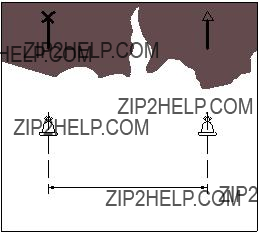
Log calibration
The ST30 Bidata should not be used for navigational purposes until the transducer paddlewheel has been calibrated to suit the characteristics of the vessel.
This is a simple operation and is carried out as follows:
1.Choose two charted points that are approximately 1nm apart.
Approximately 1Nm
D699
2.Choosing a time when the tidal flow is at a minimum, go from point 1 to point 2 and record the ST30 Bidata trip distance.
3.Go from point 2 to point 1 and record the trip distance.
4.Add the two distances together and divide by two to obtain an average distance.
5.Measure the distance between the two points on a chart.
6.The correction factor (CF) can now be calculated.
CF = Charted Distance
Average Distance
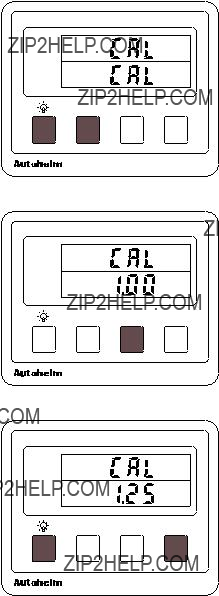
Enter correction factor (CF)
1.Press and hold and Depth. After 2 seconds the display will show CAL.
and Depth. After 2 seconds the display will show CAL.
DEPTH
SPEED
DEPTH SPEED RESET
D685
2.Press Speed 3 times to select 'Log Calibration'.
DEPTH
SPEED
DEPTH SPEED RESET
TM
BIDATA
D700
3.Set the calculated correction factor (CF) using Reset or .
.
DEPTH
SPEED
DEPTH SPEED RESET
TM
BIDATA
D701

4.To exit calibration and return to 'Speed and Depth' mode, press and hold and Depth for 2 seconds.
and Depth for 2 seconds.
DEPTH
Metres
Mph
SPEED
DEPTH SPEED RESET
TM
BIDATA
D703
6.3 Calibration Lock/Unlock
The lock/unlock feature removes the risk of accidentally changing the calibration values set for log calibration, shallow alarm etc.
For security, the calibration lock/unlock feature is accessed by an extended hold down of and Depth as follows;
and Depth as follows;
1.Press and Depth for 14 seconds until CAL is displayed for the second time.
and Depth for 14 seconds until CAL is displayed for the second time.
DEPTH
SPEED
DEPTH SPEED RESET
TM
BIDATA
D706

2.Press Speed and Reset momentarily
DEPTH
SPEED
DEPTH SPEED RESET
D707
3.Calibration Lock/Unlock is switched on or off using Reset.
DEPTH
SPEED
DEPTH SPEED RESET
D708
C0 = Calibration Locked, i.e. no access
C1 = Calibration Unlocked, i.e. normal access
4.To exit 'Calibration Lock/Unlock', press and hold and Depth for 2 seconds.
and Depth for 2 seconds.
DEPTH
Metres
Mph
SPEED
DEPTH SPEED RESET
TM
BIDATA
D709
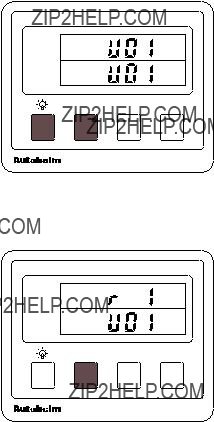
6.4 Master/Repeater mode
As it leaves the factory, the ST30 Bidata is set to operate in master mode. In this mode the instrument is connected to speed and depth transducers, and transmits data onto the SeaTalk Bus. The Bidata can be set as a repeater, to repeat depth and speed information already on the SeaTalk bus.
Repeater mode is set up as follows:
1.Press and hold and Depth for 5 seconds until the display shows U and a two figure number.
and Depth for 5 seconds until the display shows U and a two figure number.
DEPTH
SPEED
DEPTH SPEED RESET
TM
BIDATA
D704
2.Press Depth to display operating mode: r0 = Master mode
r1 = Repeater mode
DEPTH
SPEED
DEPTH SPEED RESET
TM
BIDATA
D705

3.Press Reset to change between modes
DEPTH
SPEED
DEPTH SPEED RESET
D705A
4.To exit calibration, press and hold and Depth for 2 seconds.
and Depth for 2 seconds.
DEPTH
Metres
Mph
SPEED
DEPTH SPEED RESET
TM
BIDATA
D705B
Note: When the Bidata is set to Repeater mode access to calibration is inhibited.
Chapter 7: Specification
Detailed Specification:
Depth:
Speed:
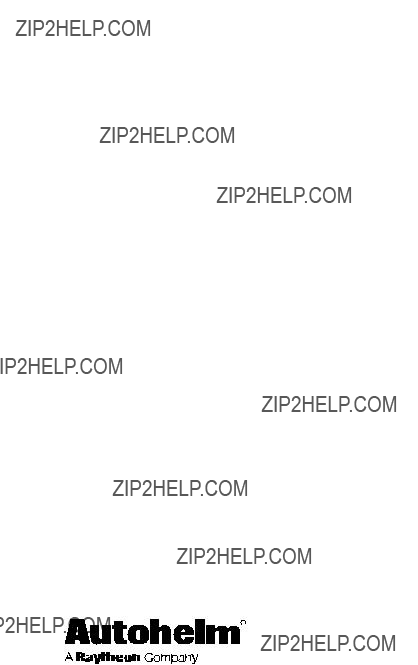
Nautech Limited, Anchorage Park, Portsmouth
P03 5TD, England
Telephone (0705) 693611. Fax (0705) 694642
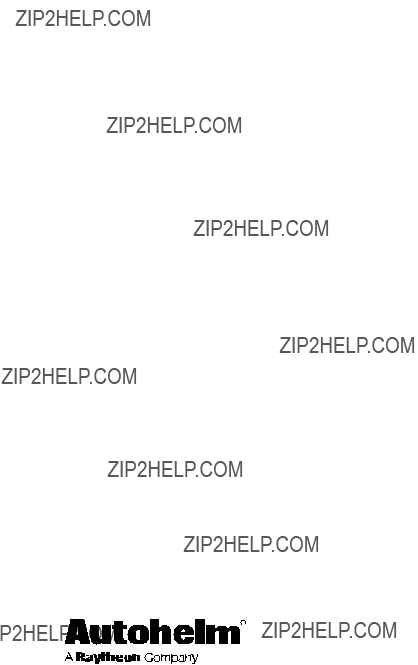
Nautech Limited, Anchorage Park, Portsmouth
P03 5TD, England
Telephone (0705) 693611. Fax (0705) 694642